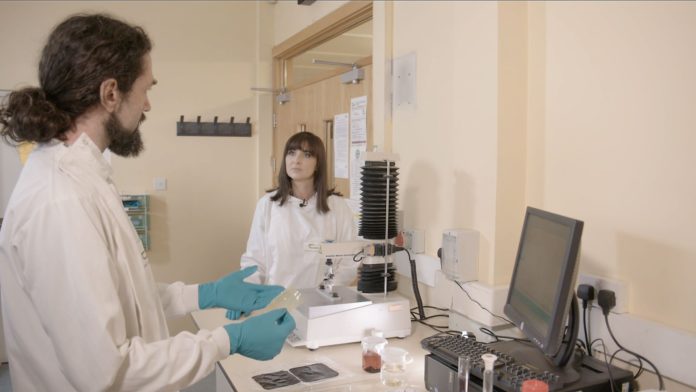Teagasc researchers, Dr Anne Maria Mullen and Dr Carlos Alvarez, have developed a method to generate bioplastics using haemoglobin from blood.
They will appear on 10 Things to Know About … Blood, airing tonight (Monday, November 8th), on RTÉ 1.
Blood
Teagasc explained that animal blood is a high-volume but underutilised co-product of the meat processing chain.
It said you can separate and utilise the high-value plasma fraction. However, the lower-value red blood cell fraction is usually disposed of at a high cost.
This is due to the haemoglobin content of red blood cells, which can be problematic from colour, flavour and pro-oxidant perspectives.
Furthermore, Teagasc has developed a patentable method to utilise this haemoglobin as a raw material for the generation of bioplastics. They claim these have the potential for use as packaging materials for a variety of applications.
Besides, the state agency claims this could reduce our reliance on petroleum-based plastics and contribute to the circular bioeconomy.
Dr Anne Maria Mullen, Teagasc researcher and co-ordinator of the projects, highlighted the importance of taking this approach.
She said it tackles two challenges related to the environment and sustainable use of natural resources.
“On one hand, the meat processing industry generates valuable and interesting co-products that are currently used for low added value applications or incur extra costs to be collected and disposed of.”
“On the other hand, petrol-based plastics have a negative impact on the environment,” he explained.
He said sustainably sourced materials, with minimal impact on the planet need to replace these.
Concluding Dr Carlos Alvarez, the principal investigator on the projects, added:
“Our invention can generate biodegradable and food-grade bio-plastics using blood haemoglobin as the main building block, to be used in food applications as packaging material.”
“We have an ongoing project on improving the mechanical properties of our blood-based films.”
“Also, we are investigating how to scale up this innovative film generation process to transfer to the Irish food industry.”





